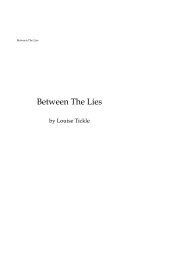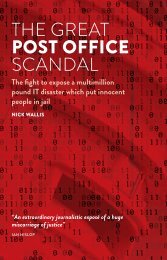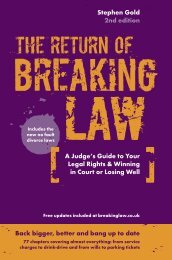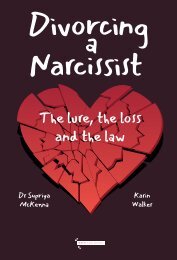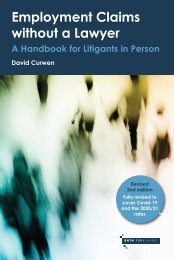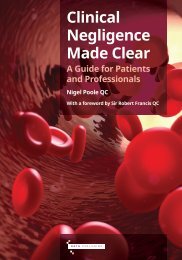Insolvency Made Clear: A Guide for Debtors
Plain English, practical guidance for anyone facing demands over a debt they are struggling to pay.
Plain English, practical guidance for anyone facing demands over a debt they are struggling to pay.
You also want an ePaper? Increase the reach of your titles
YUMPU automatically turns print PDFs into web optimized ePapers that Google loves.
<strong>Insolvency</strong> Law <strong>Made</strong> <strong>Clear</strong> – A <strong>Guide</strong> For <strong>Debtors</strong><br />
The role of the Trustee is, under s305 of the Act, to ‘get in and realise (i.e. sell)<br />
the estate of the bankrupt’. It is helpful to discuss the estate of the bankrupt and<br />
the process of ‘realising’ it separately.<br />
2.2 The estate of the bankrupt<br />
The ‘estate’ of the bankrupt is the property which a Trustee in Bankruptcy is<br />
entitled to sell. The definition of ‘property’ is very wide, and it includes property<br />
held overseas, shares, and goodwill of the bankrupt’s business.<br />
The property of the estate automatically ‘vests’ (i.e. belongs) to the Trustee. The<br />
role of the Trustee is to sell that property to distribute the proceeds to the creditors.<br />
To give an example: be<strong>for</strong>e a debtor becomes bankrupt, they have unrestricted<br />
access to their own bank account. After the bankruptcy order is made,<br />
the Trustee is entitled to make payments out of that account, and the bankrupt<br />
is no longer able to. It is contempt of court not to deliver up to the Trustee all<br />
the property, books and records which they are required to take control of: see<br />
s312 of the Act. A bankrupt is not allowed to sell property they once held without<br />
the permission of the Trustee. One of the first acts of the Trustee is likely to be<br />
to contact all the bankrupt’s banks to request that no further transactions take<br />
place from the account without their permission, or to transfer the money into<br />
a separate account controlled by the Trustee.<br />
2.2.1 Exceptions<br />
Not all property which belongs to the bankrupt gets automatically transferred<br />
to the Trustee. Most of it does. The only property which does not get transferred<br />
to the Trustee is set out in s283(2) of the <strong>Insolvency</strong> Act:<br />
• such tools, books, vehicles and other items of equipment as are necessary to<br />
the bankrupt <strong>for</strong> use personally by them in their employment, business or<br />
vocation;<br />
• such clothing, bedding, furniture, household equipment and provisions as<br />
are necessary <strong>for</strong> satisfying the basic domestic needs of the bankrupt and<br />
their family.<br />
The first exception means that if the bankrupt is, <strong>for</strong> example, a builder then<br />
they can keep the main items of equipment needed <strong>for</strong> their job such as a vehicle<br />
with a large boot or a valuable collection of drills. This exception is limited<br />
because the Trustee has the power to replace an expensive item with a less expensive<br />
item which will per<strong>for</strong>m a similar purpose. To give an extreme example,<br />
if the Trustee decides that the bankrupt does not need a Jaguar car, but can<br />
per<strong>for</strong>m their job with a Skoda, then the Trustee can sell the expensive car, buy<br />
the cheaper one, and distribute any profit to the creditors. In practice, a Trustee<br />
14



